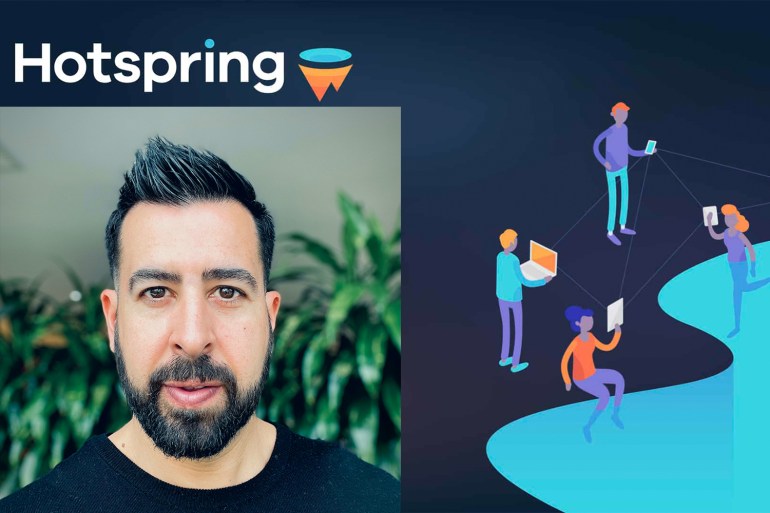Visual effects outsourcing platform Hotspring is expanding into the Asia-Pacific region, with aims to give VFX companies and studios a new way to connect with each other and establish contracts.
The company was co-founded early last year by CEO Jon Mason and COO Varun Parange, who previously founded Trace VFX, and has already helped to deliver around 8,000 shots.
Steven Marolho, founder of RELATOR production agency, has been appointed head of business development APAC.
He told IF the current production boom in Australia provides a perfect opportunity for local VFX houses to get involved.
“Right now, with the rebates and incentives for people to work on the international work, that stipulates [for example] that you do the work in NSW with NSW talent,” he said.
“That’s great and it’s really making the industry buzz, but it’s sucking up a lot of the talent.”
“[Hotspring] gives studios the opportunity to still take on that business.
“Even if they have most of their team on that international production, which they need to do to satisfy the rebate, using Hotspring, they can take on more work.
“More people are taking on post-production and VFX in-house. They don’t have a setup for outsourcing and they don’t have deep talent rolodexes either.”
The platform uses a triple-bidding process, allowing selected VFX vendors from around the world to set a cost and timeframe for specific projects, within the deadline set by studios.
There are two options for those looking for bids; either the Hotspring in-house team, dubbed the ‘Flashteam’, or other vendors who are within the system – currently the platform has around 30 to 40 vendor partners.
A studio can examine all bids and make a choice for each shot within a project, allocating all jobs to a single provider or splitting the tasks.
Rotoscoping, paint and clean-up, 3D tracking, compositing, 3D assets, digital matte painting, and real-time work can all be contracted, with Hotspring taking a 15 per cent commission for work secured. There is no cost for studios looking for bids.
Hotspring also centralises the vendor communication process, with studios and vendors able to communicate through the Hotspring site, including separate communication threads for each shot within a project, to sort job instructions.
“As a producer if I’ve got some work, I have to reach out to three different vendors,” Marolho said.
“Maybe that’s three emails, and then I have to give them access to the shots or the boards. But you put all of that information into Hotspring, it sends that all out on your behalf,” Marolho said.
“It’s cut down a lot of handling. If you’ve got the actual shots the system will down convert it, watermark it, send it all off to the vendors so all of that media management is gone.”
Tony Clark, managing director at Rising Sun Pictures, told IF he believes there is “absolutely” a use for such a platform in the Australian market.
“Where people don’t have established relationships off-shore, it has value in providing a common interface.”
However, he thinks the platform may have limitations when it comes to more complex work.
“If you rotoscope something, you’ve either done a nice job of cutting around the edge of something or you haven’t. But if you’re designing a model or you’re compositing a shot, there is a lot more room for interpretation of what the creative outcome is and success is a much more variable idea.
“Those kinds of processes we tend to keep much closer to home, because they’re the ones where the client and senior creative leadership want to interact with them a lot more frequently and directly.”
Hotspring believes that studios can save up to 35 per cent on overall outsourcing costs through using the platform, with Marolho proposing it creates a good ecosystem for competitive prices.
However, Clark counters there are several factors to consider when looking at cost saving.
“There is a level of overhead which is used to guide the people along the line to actually achieve the outcome that you want,” he said.
“It probably works really well for rotoscoping, matched move, for camera tracking and those kind of things, but how successful would you be if you sent 50 complicated compositing shots?
“The question is would I get the same result from somebody sitting here in my cutting room, as doing it remotely? I don’t think I would.”
VFX providers join the platform by invitation, or by going through an application process, which has a skills-testing element to ensure contractors are of acceptable quality.
Hotspring will bring in vendors if studios have an established relationship.
“If studio X isn’t already in the system, we will bring them on; the client doesn’t have to do anything because in the end we’re not asking people to break relationships,” Marolho said.
Studios can request changes as the project progresses, and vendors are then able to revise costing and deadlines for the new requirements.
Overall, Marolho believes that the management team, and their understanding of the VFX market, should provide confidence that studios will receive quality work.
“It’s intuitive in the way that it understands the process,” he said.
“The people running Hotspring, this is what they do, they’ve done it for the best studios in the world, and so there’s a quality guarantee.”


